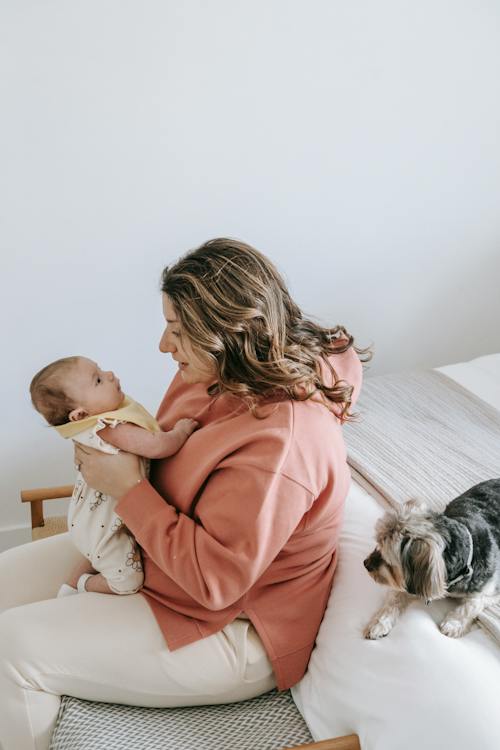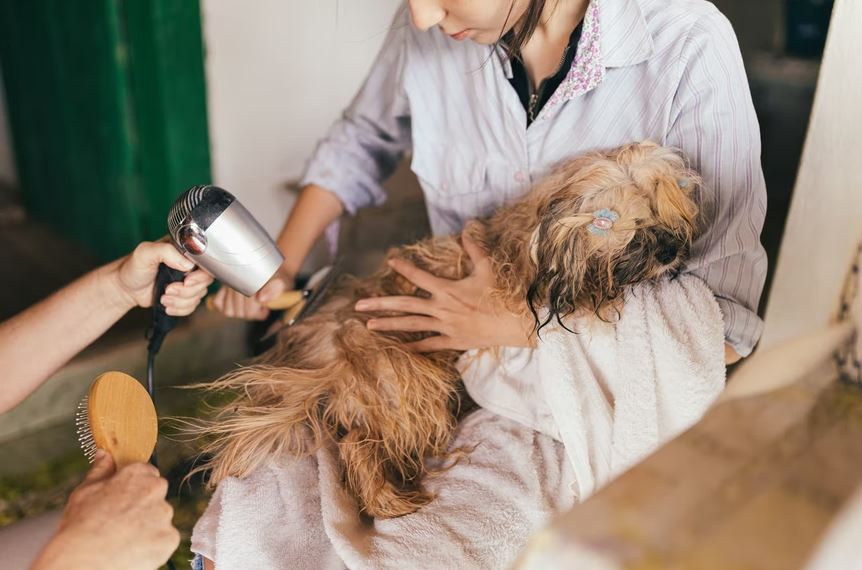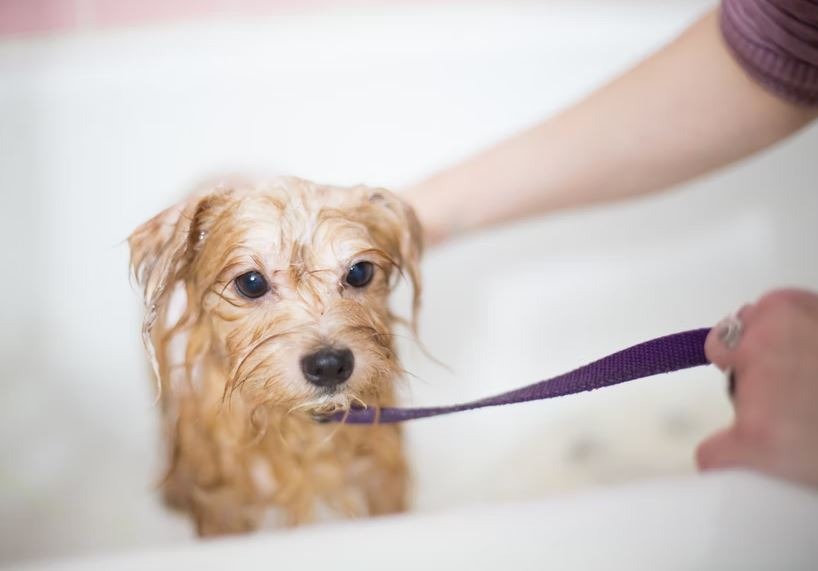A flea is a jumping, six-legged bug without wings. Ticks, on the other hand, are arachnids which means they are linked to spiders. They have six to eight legs. Adult fleas normally choose a dog or cat as their host, and they remain there until they die. They can live for two to three months on a pet. Ticks can live up to three years in varied habitats and feed on many hosts for up to two weeks at a time as they go through different stages of development. They can infest your newborn puppies, clothing, and furniture, while they multiply, and bring buddies along with them. In most cases, ticks just wait around and attach themselves to passing humans and animals.
Newborn pups are ideal flea hosts because they are hairy and live very near to each other with the warmth of their mother. It’s a perfect breeding place for fleas, so seeing a flea-infested one-week-old puppy isn’t uncommon. Fleas can multiply rapidly if not treated until the issue is brought under control. It is critical that you remove fleas on your newborn puppies as soon as feasible and as securely as possible.
Here are several methods for removing fleas from newborn puppies:
1. Separate the Puppies
Separate the puppy temporarily in a location where they may be treated with warm water, allowing you to physically eliminate the fleas. This is the only effective option for such young puppies that do not involve the use of strong flea medications. While you treat the fleas in the toilet or another non-carpeted area Support their head with your palm, keeping it high above the water. Then, with care, pout the water all over the puppy’s coat until it is completely soaked. Lift the puppy out of the water and gently massage it with a warm cloth to eliminate any remaining wetness. Place your dog on a dry towel and use a flea comb to go through their entire coat. This comb is precisely constructed with finely spaced teeth to trap fleas as you work your way through the fur. Part the fur and then comb a bit at a time, eradicating any fleas that you come across. Squish the fleas or place them in a jar full of hot water or apple cedar vinegar, then leave the puppies under the sunroof for a while then continue with the other following method.
2. Treat the mother
Not only your dog but if there are additional pets in the home, they must all be flea-treated. Prescription solutions developed for breastfeeding moms should always be used. There are various dog flea and tick shampoo choices for dogs and cats on the market that can be highly effective when used correctly. Flea dog shampoos can contain a few chemicals, some of which are more effective than others. However, you must consider whether your pet can tolerate being soaked and lathered for five to ten minutes, as that is how long the shampoo takes to sink in. After a lovely warm wash, you’ll have killed the fleas and will be able to remove the dead fleas from your pet with a dog flea tick comb. However, flea shampoos will not protect your dog from future flea infestations.
3. Wash the bedding
Collect and wash all the bedding while your pups are temporarily removed. If the fabric can tolerate it, hot water is preferable, but the detergent should kill the fleas. Running the clothes through the dryer or hanging it out to dry on a bright day might help remove any traces that make it through the wash. Once all of the bedding has been washed, sprinkle some salt and baking soda over the items and leave them to sit. The combination of salt and baking soda is extremely good at drying out fleas and killing flea larvae. Allow it to sit overnight before vacuuming it in the morning. If the region is penetrated by sunshine, leave it exposed for an extended period of time for a more effective result.
4. Dog collar treatment
A homemade flea collar is a clever approach to keep your dog’s flea protection consistent without having to spray or rub the mixture on them. Purchase or construct a basic collar or bandanna, then dilute a few drops of lavender or cedar oil in water and apply to the collar or bandanna. Purchase or build a basic dog collar, then soak it in a teaspoon of unflavored vodka and let it dry. To make a scented collar, add a few drops of your favorite essential oil; otherwise, using the vodka alone is an excellent alternative for dogs who don’t like the aroma of essential oils.
5. Treating the Home
The entire house is now ready for flea treatment. There are several options available, including highly effective foggers. Boric acid-based treatments may be a better choice in homes with small children or in other settings where chemical residues are a concern. The most effective products contain both a chemical that kills adult fleas and another that kills the other life cycle stages. The latter is referred to as an insect growth regulator.
One such growth regulator is Methoprene. Aerosol foggers, on the other hand, may not penetrate far enough to kill all of the fleas and larvae that are hiding. A sodium borate product applied to carpeting is another alternative for indoor management. Consider contacting a local exterminator for an estimate and a guarantee that their approach will rid your property of fleas.
6. Outdoor flea control
Sprays and pelleted pesticides are commonly used for outdoor control after properly cleaning dog houses and dog kennels. An insect growth regulator is also an excellent option here. Pyriproxyfen is more stable in the sun and lasts longer than Methoprene. A benign option, diatomaceous earth, can be very effective and is safe to use in and around vegetable gardens and children’s outdoor play equipment. Look for a food-grade diatomaceous earth product, such as Diatomaceous Earth Food Grade Powder, that is safe to use around dogs.
Certain harmless nematodes (small worms) can also be spread in warm, moist parts of the yard frequented by pets and fleas. The nematodes consume flea larvae. When there is snow on the ground, much of the major source of fleas is eradicated. Consult your veterinarian about which procedures and products are best for you and your dogs. Your veterinarian is the finest source of up-to-date flea knowledge.
In summary, while various flea treatments are available for an adult dog in the home, most are not safe for young puppies. That means a fresh technique will be required to resolve the matter to ensure utmost safety for your adorable pups. Be observant for signs like scratching, when your puppy does this most often, then it can probably be due to fleas’ infestation. This is one of the seven stress signs to watch out for in your pup and quick action must be undertaken. Finally, one of the primary reasons for not using flea products on newborn puppies is the delicate nature of their internal organs. This means that they are much more likely to develop side effects than adult canines.



